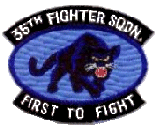By Timothy Karpin & James Maroncelli
Ok, this article is not about flying the F-4 in combat, but as a person who sat on nuclear alert at Kunsan Air Base, Korea, in 1972 and 1973 with a nuke bomb on my F-4 I found it very interesting. Here is the beginning of the article:
“Major Alfred D’Amario thought the worst was over after his violent ejection from the dark and smoky cockpit of his Boeing B-52G Stratofortress. The bomber he had abandoned was diving in flames toward the nearby ice-covered Bylot Sound off Thule Air Force Base in northwestern Greenland. D’Amario knew that the one-point safe bombs would not go “nuclear” in a crash. As he descended, the major sighted an orange fireball eight miles to the west. Suddenly, an intensely bright white light outshone the orange jet fuel blaze as the high explosives in four hydrogen bombs in the bomb bay detonated from the shock of impact. A supersonic blast wave tore outward in all directions into the subfreezing arctic air. In several seconds, D’Amario’s easy downward drift was interrupted. As he recounted in his book Hangar Flying: “I watched it [the bright light] for a few seconds and, suddenly, all Hell broke loose. My parachute and the life raft both took off to my right leaving me what looked like ten or fifteen feet to the left of them. Then, I started swinging back and forth between them.” D’Amario and five of his fellow crewmen made it safely to the ground. One crew member did not. Thus began one of the U.S. Air Force Strategic Air Command’s worst “Broken Arrow” nuclear incidents of the Cold War.”

Leave A Comment